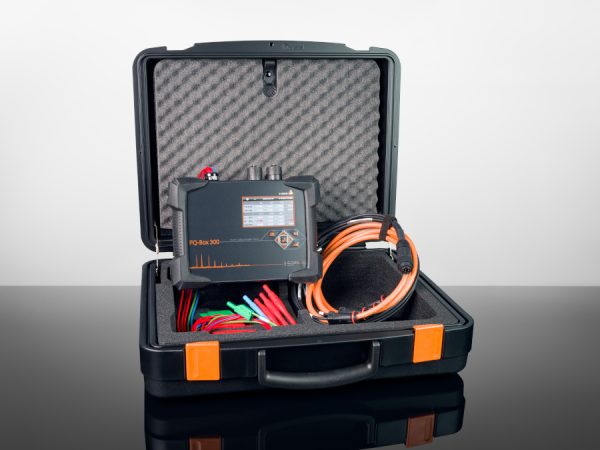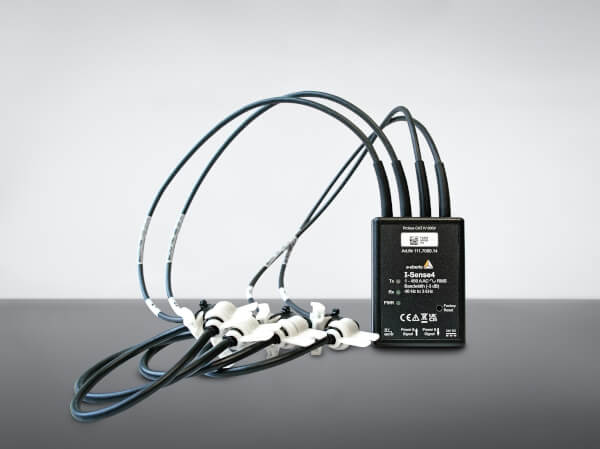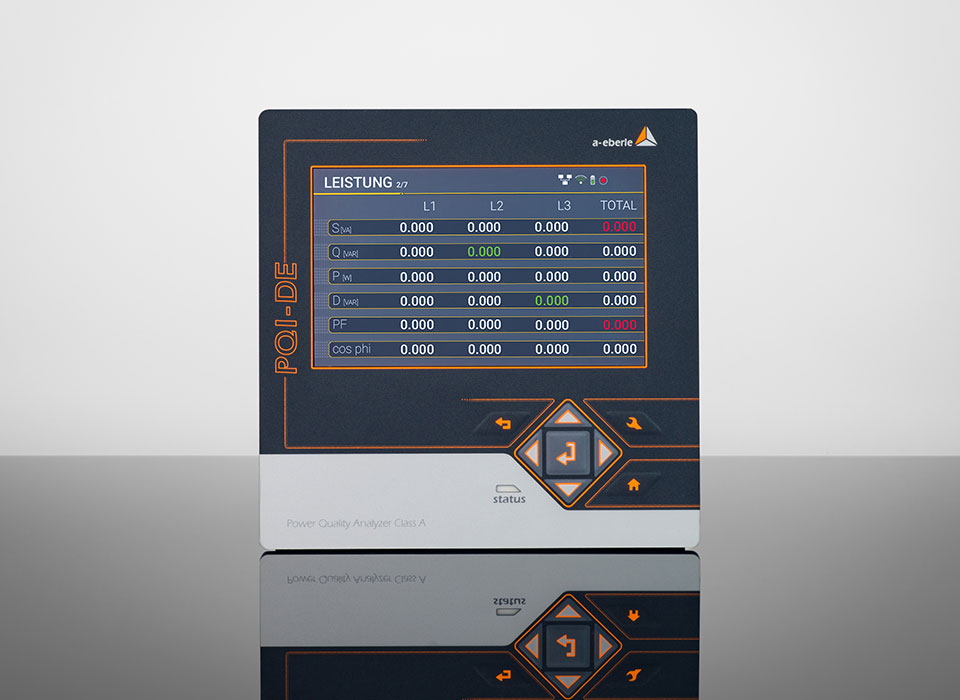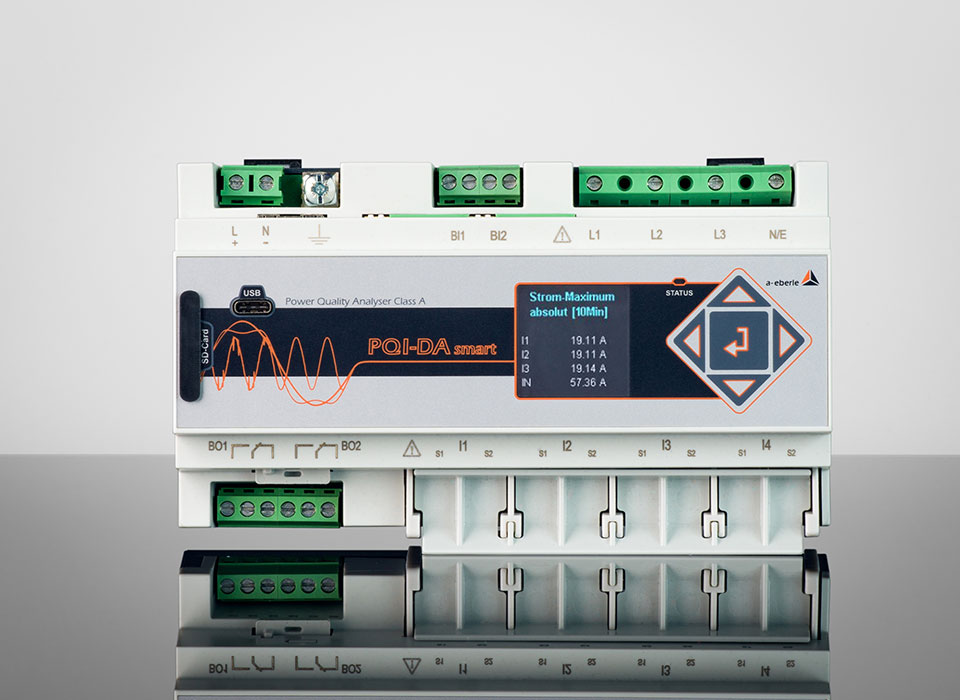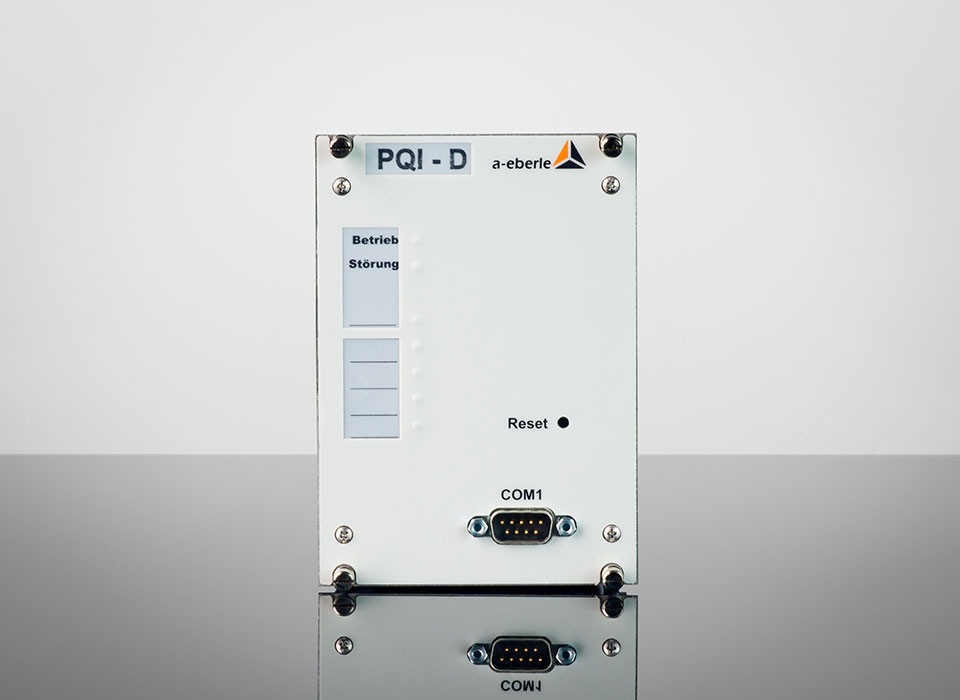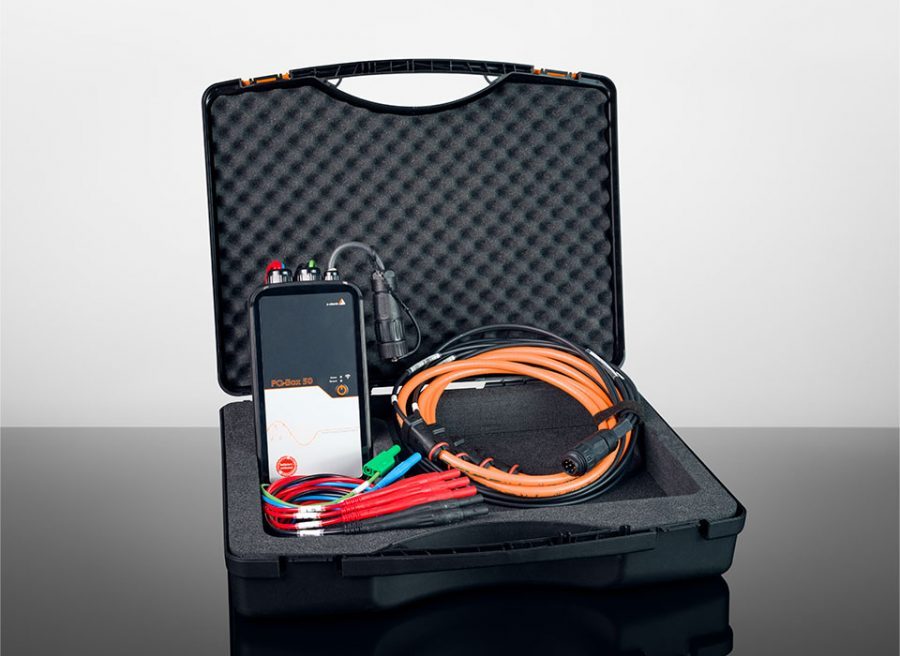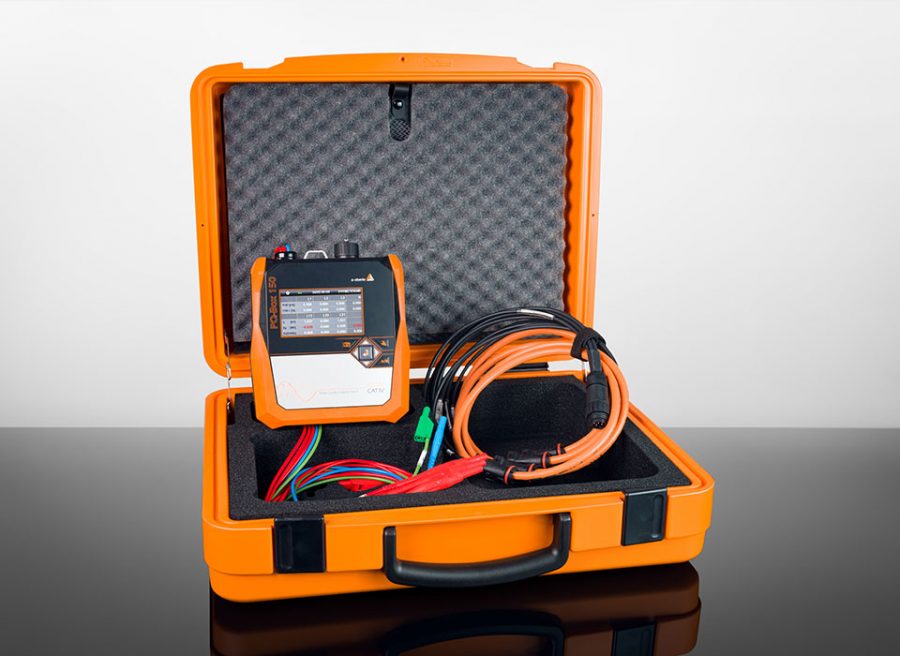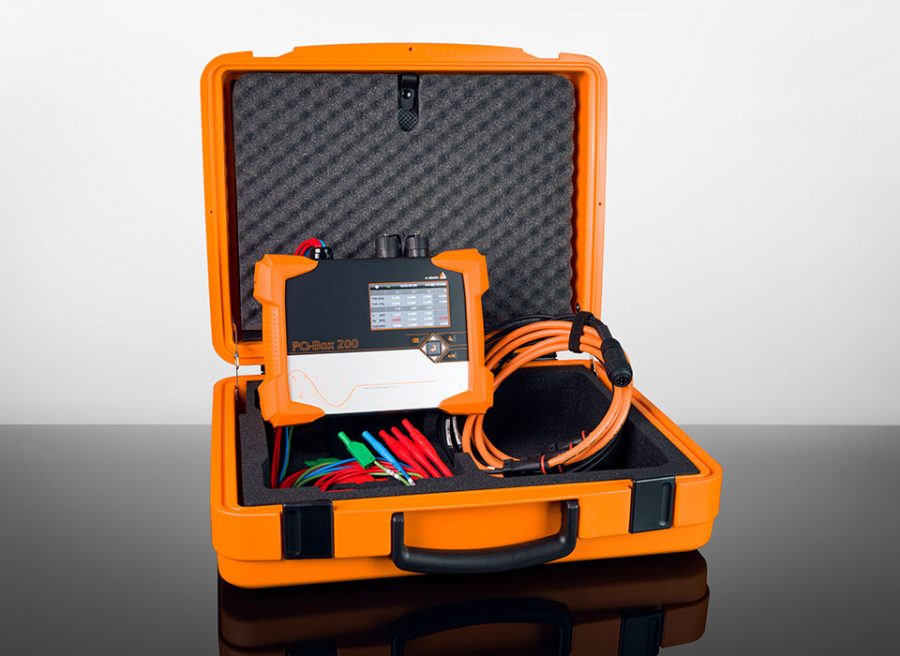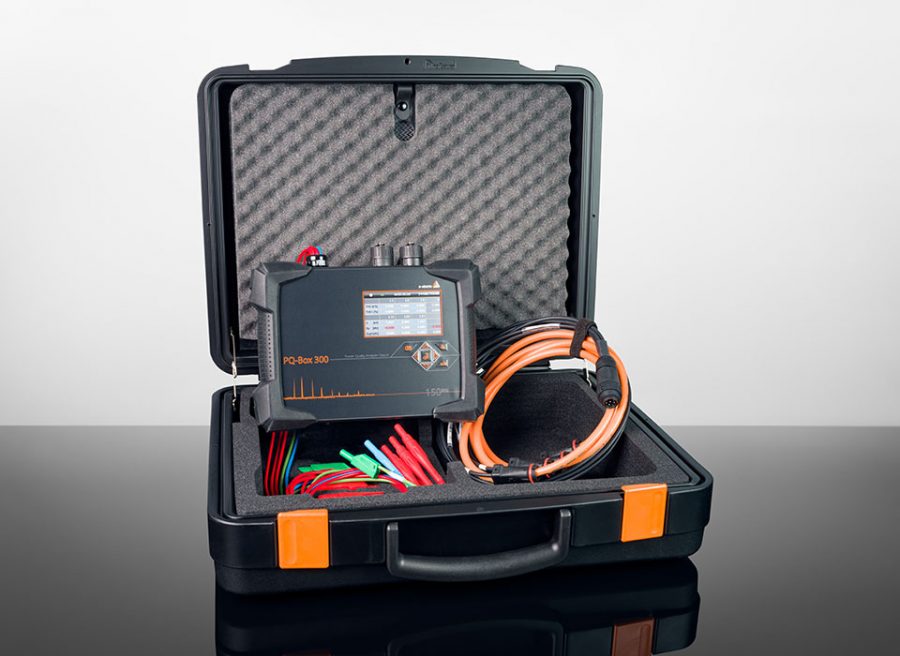
The challenge
In the first part of the measurement campaign in 2016, various e-vehicles were assessed as to their charging behaviour and feedback to the network. The evaluation considered DC harmonics up to the 50th, or supraharmonics to 20 kHz. As some e-mobilities have frequency lying much higher than 20 kHz, a further measurement campaign was begun at TH Bingen in September 2017 to measure emissions in the 150 kHz range. In addition, the mutual influences of the various vehicles, and between the vehicles and a solar inverter at TH Bingen, were investigated.
Summary
E-vehicles and modern power electronics can have network effects far above 2.5 kHz. In the future, there will be tolerance levels in the public grid for these frequencies. The measurement process for this has not yet been determined. The A. Eberle PQ-Box 300 records the range up to 170 kHz for a permanent measurement task. The measurement device can be set as desired for 200 Hz and 2k Hz frequency bands and is thus well-suited for future changes in standards. Furthermore, it is also possible to choose different measurement processes for recording and for parallel online measurement.
